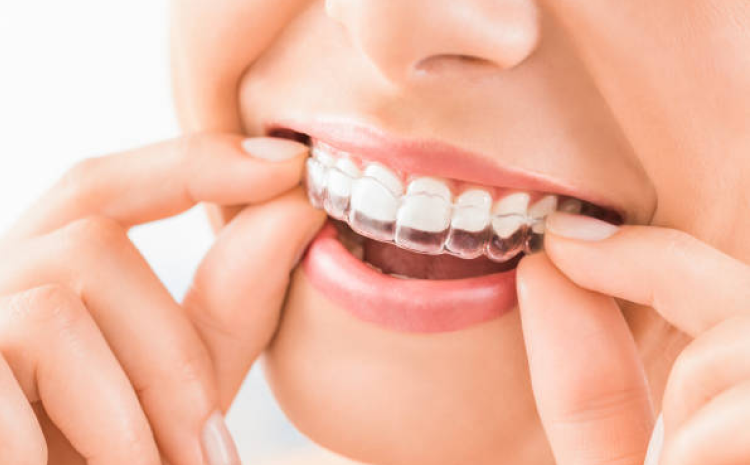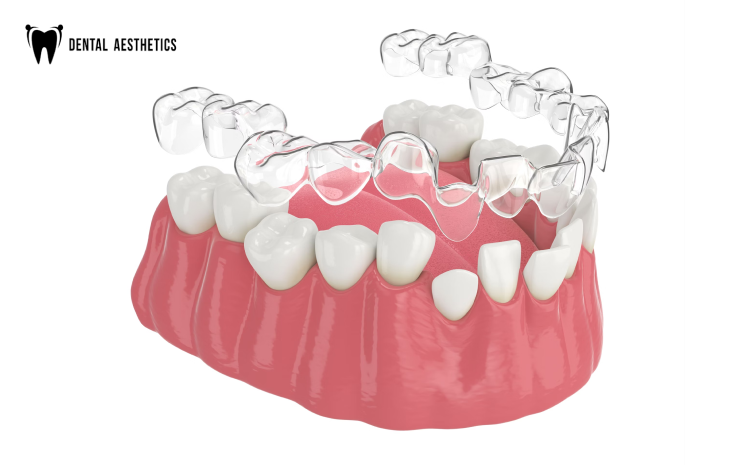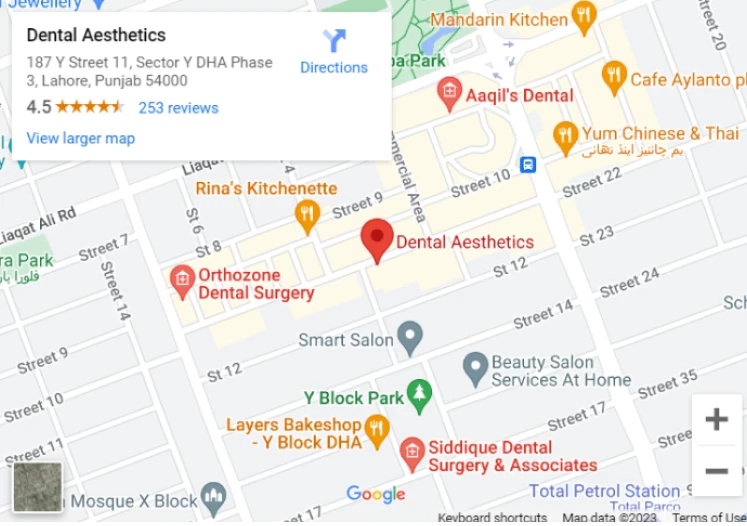How Do Clear Aligners Work? Everything You Need to Know

April 22, 2025
Introduction:
In today’s age of modern orthodontics, clear aligners have emerged as a popular, discreet, and effective alternative to traditional braces. With their transparent design and removable convenience, they have revolutionized the way people straighten their teeth. If you’re considering clear aligners but want to understand how they work, this comprehensive guide will provide you with everything you need to know. From how they function to their benefits, suitability, and maintenance — we've got it all covered.
What Are Clear Aligners?
Clear aligners are orthodontic devices made from transparent plastic that are used to adjust teeth alignment. Unlike traditional metal braces, clear aligners are virtually invisible and can be removed when eating, brushing, or flossing.
Key Features of Clear Aligners:
- Made from BPA-free, medical-grade plastic
- Custom-fitted to each patient’s mouth
- Used in a series to gradually shift teeth into desired positions
Popular Brands of Clear Aligners:
- Invisalign
- ClearCorrect
- Candid
- SmileDirectClub
- byte
How Do Clear Aligners Work?
WClear aligners work by applying gentle, consistent pressure to teeth, gradually moving them into the desired position. Each set of aligners is slightly different, representing a new stage in the movement of your teeth.
Step-by-Step Breakdown:
- Initial Consultation: The orthodontist evaluates your teeth and discusses treatment goals.
- Digital Scanning or Impressions: 3D scans or physical impressions are taken to design custom aligners.
- Treatment Planning: A series of aligners are created, each to be worn for 1–2 weeks.
- Wearing Aligners: Patients wear aligners 20–22 hours per day, only removing them to eat or brush.
- Progress Monitoring: Periodic checkups ensure teeth are shifting correctly.
- Retention Phase: Once treatment ends, retainers are used to maintain the new alignment.
Who Can Benefit from Clear Aligners?
Clear aligners are suitable for a wide range of orthodontic issues. However, they are most effective for mild to moderate dental misalignments.
Ideal Candidates Include:
- People with mild to moderate crowding
- Those with spacing issues or gaps
- Patients with overbites, underbites, or crossbites
- Teens and adults seeking a discreet solution
Not Suitable For:
- Severe orthodontic cases requiring jaw repositioning
- Children whose teeth are still developing
Advantages of Clear Aligners
Clear aligners offer numerous benefits over traditional braces, making them a popular choice among patients.
Benefits Include:
- Aesthetic Appeal: Virtually invisible
- Comfort: Smooth plastic, no wires or brackets
- Convenience: Removable for eating and cleaning
- Fewer Dental Visits: Minimal adjustments required
- Predictable Results: Digital planning ensures accurate movement

Potential Drawbacks and Limitations
While clear aligners offer many benefits, it’s important to understand their limitations.
Drawbacks May Include:
- Must be worn consistently to be effective
- Not ideal for complex orthodontic issues
- Can cause initial discomfort or lisp
- More costly than traditional braces
The Clear Aligner Process in Detail
A closer look at what you can expect during each stage of the aligner journey.
1. Consultation and Evaluation:
- Orthodontic evaluation
- Treatment goal discussion
2. Scanning and Imaging:
- 3D digital scans or molds
- Photos and x-rays taken
3. Custom Treatment Plan:
- Computerized simulation of teeth movement
- Review and approve plan with provider
4. Aligner Production:
- Custom aligners manufactured
5. Wearing the Aligners:
- Change every 1–2 weeks
- Wear 20–22 hours/day
6. Monitoring Progress:
- Regular orthodontist visits
7. Post-Treatment Retainers:
- Custom retainer provided
- Worn nightly to prevent shifting
Cost of Clear Aligners
The cost of clear aligners varies based on several factors including provider, brand, treatment complexity, and geographic location.
Average Cost Ranges:
- Invisalign: $3,000 to $8,000
- ClearCorrect: $2,500 to $6,000
- SmileDirectClub: $1,950 to $2,500
- Candid: $2,000 to $3,500
Factors Affecting Cost:
- Length of treatment
- Severity of misalignment
- Dental office location
- Insurance coverage
Caring for Your Clear Aligners
Maintaining your aligners is essential for oral health and treatment success.
Tips for Aligner Care:
- Clean aligners daily with a soft brush and mild soap
- Avoid using toothpaste, which can scratch them
- Rinse aligners before placing them back in your mouth
- Store in a protective case when not in use
- Avoid hot water, which can warp the plastic
Clear Aligners vs. Traditional Braces
Let’s compare clear aligners and metal braces across key categories:
| Feature | Clear Aligners | Traditional Braces | Visibility | Invisible | Highly visible |
|---|---|---|
| Comfort | More comfortable | Can cause irritation | Removability | Yes | No |
| Maintenance | Easier | Requires special tools | Suitability | Mild/moderate cases | All case types |
| Cost | Usually higher | Usually lower |
Common Myths About Clear Aligners
Dispelling the most common misconceptions:
-
Myth 1: Clear aligners are only for cosmetic improvements.
Fact: They can correct a variety of dental issues. -
Myth 2: Clear aligners work slower than braces.
Fact: Treatment times are often similar, depending on the case. -
Myth 3: DIY aligners are just as effective.
Fact: Professional supervision is essential for safety and success. -
Myth 4: Aligners are painless.
Fact: You may feel pressure or discomfort initially.
Real Patient Experiences
Hearing from real users can offer valuable insight. Many report:
- Increased confidence
- Improved dental hygiene
- Successful outcomes after treatment
Future of Clear Aligner Technology
Advancements in technology are making clear aligners more accessible, effective, and personalized.
Trends Include:- AI-assisted treatment planning
- Faster turnaround times
- Eco-friendly materials
- Remote monitoring apps
FAQs About Clear Aligners
-
1. How long does it take to see results with clear aligners?
Most people start noticing changes within a few weeks. Full treatment usually takes 6-18 months. -
2. Are clear aligners painful?
Some initial discomfort or pressure is common, especially when switching to a new set. -
3. Can I eat with clear aligners on?
No, you should remove them while eating to avoid damage. -
4. How often do I need to wear them?
You should wear them 20-22 hours a day for effective results. -
5. Are clear aligners covered by insurance?
Some dental insurance plans offer partial coverage. Check with your provider. -
6. Can I drink coffee or tea while wearing aligners?
No, as they can stain or warp the aligners. Remove them before drinking anything other than water. -
7. What happens if I lose an aligner?
Contact your provider immediately. They may advise you to wear the previous or next aligner. -
8. Is it necessary to wear retainers after treatment?
Yes, retainers help maintain the new position of your teeth.
Conclusion
Clear aligners offer a modern, discreet, and effective way to straighten your teeth. With proper care, commitment, and professional guidance, they can help you achieve the smile you’ve always wanted. Whether you’re just starting to consider them or are ready to take the plunge, understanding how they work is the first step toward a more confident you.
Ready to transform your smile with clear aligners? Talk to a certified orthodontist today and begin your journey to better oral health and self-esteem.


